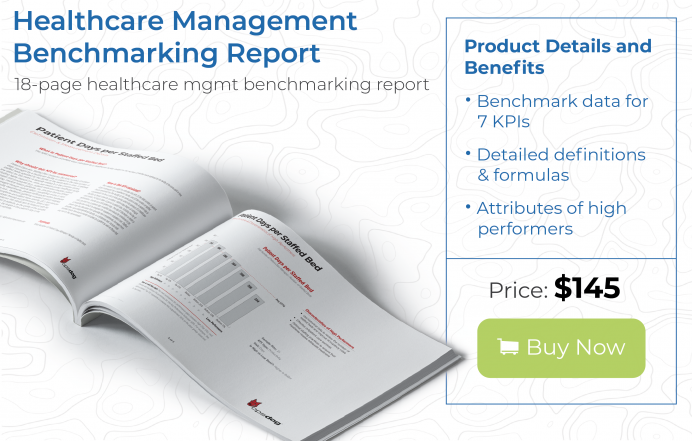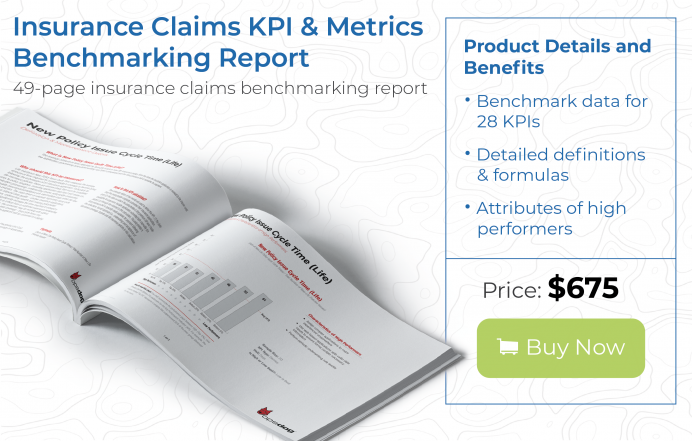When healthcare providers submit medical claims for reimbursement, they expect the insurer to pay claims quickly and accurately with no or minimal back and forth. If the process is unwieldy—even if the provider did not include the correct claim information—both the insurer and the provider lose. For reasons like this, it’s important to track health insurance claims with performance metrics.
How Tracking Health Insurance Claims Can Improve Performance
After a patient receives care, doctors, pharmacists, physical therapists, and other healthcare providers submit a medical claim to a health insurance company for reimbursement.
It’s a vital but complex process that has a significant impact on your productivity. Insurers must verify the services provided, the charges, and the authenticity of the claims. Insurers deny claims with incorrect or missing information and send them back to the healthcare provider, causing rework and frustration for everyone involved in the process. Whether it’s a missing Social Security number, billing modifier, or plan code or an out of date submission or duplicate claim, the claim is denied.
Healthcare providers don’t get paid—and you now have to engage in back-and-forth communications with providers and lots of rework. Policyholders don’t receive payouts they are owed, or they have to call about claims status. You may need to hire more processors and operational costs rise. And, provider and policyholder satisfaction decreases.
The good news with complex processes is that there are a number of ways to improve. Key performance indicators (KPIs) that track health insurance claims can help you identify bottlenecks or problems in the claims process.
Some of these changes can be minor but have a ripple effect throughout your entire process. For instance, if your adjusters are not handling as many claims as adjusters at other insurers, perhaps your adjusters need more training. Or maybe you are not assigning the proper claims to the appropriate adjuster. Or perhaps adjusters need to rekey data manually, increasing claim cycle time.
Fixing those issues can increase productivity and performance, reduce costs, and provide better provider and policyholder service.
One of the most effective ways to improve health insurance claims processing is to automate as much of the process as possible. Electronic claim payment systems can save time and money by automatically adjudicating the majority of claims submissions. Automated workflows ensure that those claims that do need manual review are moved along the pipeline and don’t get stuck in someone’s in-box.
Use KPIs to track fully electronic processes as well as those requiring manual review. Analyze how streamlining workflows and consolidating process steps impacts KPIs such as claim cycle time and the cost to process a claim.
If healthcare providers are not submitting complete claims, track and measure the impact of training providers on claims data submission best practices.
Health Plan Claims Performance Metric Examples
Within claims processing, there are a number of helpful KPIs you can use. Here are five common KPIs that can boost the efficiency of your claims processing function and reduce costs.
KPI Metric #1: Net Promoter Score
Net Promoter Score (NPS) is the gold-standard for measuring customer loyalty in a wide variety of industries. Calculated based on surveys asking policyholders to rank you on a score of zero (bad experience) and 10 (positive experience), it can give you an indication of how likely policyholders are to recommend your insurer to others. And since consumers often listen to their friends and family, a good NPS can mean new policyholders.
To calculate NPS, group survey responses into categories (good, neutral, bad), add them up by category, and subtract the number of detractors (bad) from the percentage of promoters (good).
KPI Metric #2: Claims First Pass Resolution Rate
Rework is always costly and having to resubmit claims means rework not only for you but for healthcare providers as well. Most often, claims are not resolved the first time due to missing information on the claims form, duplicate claims or claims submitted past the deadline. Not only is having to rework claims expensive, but it also frustrates providers.
To calculate, divide the number of claims resolved the first time by the total number of claims adjudicated, as a percentage. Consider claims resolved either with full or partial payment or determined to be the patient’s responsibility as a first pass claim. Count a claim only once.
KPI Metric #3: Cost Per Claim
Claims processing is where you can really shine in the healthcare provider experience. Since reducing the cost to process claims has a direct impact on profitability, it’s important to quickly settle and pay legitimate claims.
To calculate, divide the total cost (labor, technology, overhead) of processing claims by the number of claims. Include the cost for intake, adjustments, estimates, and settlement in claims processing costs.
KPI Metric #4: Claim Settlement Cycle Time
When claims take longer to settle than they should, everyone losses. For health insurers, lengthy cycle time means increased costs, less employee productivity, and soured relationships with healthcare providers. If healthcare providers don’t receive timely payments, they may struggle to pay their bills.
To calculate, divide the sum of claims settlement times by the number of claims settled. Include only adjudicated and paid claims. Don’t count resubmitted claims.
KPI Metric #5: Claims Denial Rate
Health insurers can refuse to pay claims submitted by healthcare providers for a number of legitimate reasons, but some denials are due to missing or incomplete claims information. Claims that would have been partially or fully paid but are denied increase workloads for both insurers and providers. You may not be able to control how providers complete claims forms, but you can work to make form submittal as easy as possible.
To calculate, divide the number of denied claims by the total number of claims processed. Denied claims include both claims that cannot be reversed and those that need additional information to settle.
Final Thoughts
Claims processing is a critical function for health insurance companies. As a process with many moving parts, there are plenty of opportunities for you to tweak the process even slightly and make a significant impact on profitability.
For a full list of health insurance claims benchmark ratios and other metrics, download our Insurance Claims KPI & Metrics Benchmarking Report here.
If you need more help in developing an inventory of metrics for your health insurance provider then be sure to utilize our Healthcare Management Key Performance Indicator Encyclopedia for in-depth information on over 100 KPIs, or contact us for more information on our Benchmarking Research and business intelligence implementation services. We will help you benchmark your claims processing activities and provide you with presentation-ready, high-quality deliverables at an affordable price.




